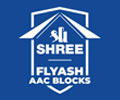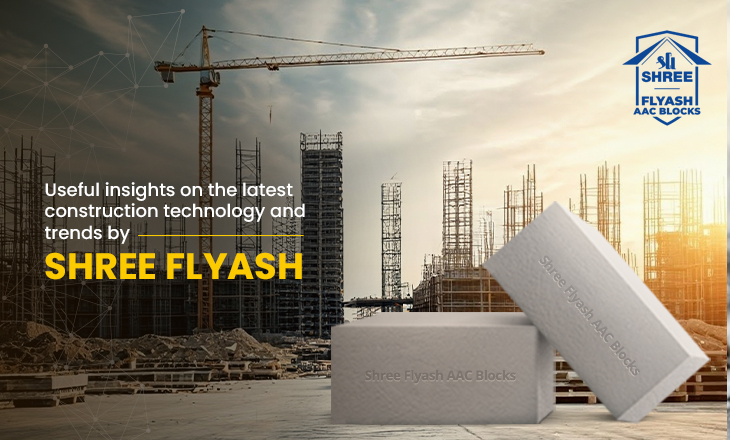India is a rapidly developing country that is embracing modern construction technologies to improve its infrastructure and support its growing economy. These new technologies have the potential to streamline and speed up construction projects, as well as cut costs. In this article, we will explore some of the latest construction technologies and trends and how they are changing the construction industry.
1. Prefabricated Modular construction: Prefabrication has quickly gained popularity in the construction industry. Prefabricated structures are manufactured off site and later transported to the site of construction. Let us discuss some of the benefits of prefabricated construction:
- Durable: Prefabrication techniques are used to make a wide range of construction materials, including precast concrete panels and light-gauge steel frames. Prefabricated construction materials are incredibly strong, and can be shipped long distances without breaking.
- Faster construction: The use of prefabricated materials shortens construction timelines, since various prefabricated parts can be manufactured when the foundation is being laid and then quickly assembled on site.
- Quality control: Prefabricated building technology emphasises rigorous manufacturing processes that eliminate any risk of defects. The quality check is carried out before the components are shipped to the building site. In addition, prefabricated materials can also be tested for properties such as fire resistance, corrosion prevention and heat insulation; ensuring that high standards of quality are maintained throughout all phases.
- Reduced risk of accidents: Prefabricated materials are manufactured off site this reduces the risk of on-site accidents.
2. Building Information Modeling (BIM): It is a digital representation of the physical and functional aspects of a building’s design and construction. This information can be used by architects, engineers and other professionals involved in the project to create detailed models. It reduces errors in the planning phase and optimises construction schedules. It is used in a wide range of projects, beginning from large scale projects to smaller residential complexes and buildings. The benefits of BIM are as follows:
- Reduced cost: Using BIM technology helps construction professionals accurately estimate costs.It helps identify potential cost overruns in the initial phase of the project. BIM also helps to reduce waste, save time and resources and increase productivity.
- Resource savings: Sustainable buildings are designed and constructed using BIM. It analyses the impact of the environmental and energy efficiency of the building design.
- Improved collaboration and communications: All stakeholders can have access and share information through BIM technology. It helps in reducing errors and improving communication. Additionally, the collaboration and coordination between different teams, such as architects, engineers, contractors and facility managers, are greatly supported by BIM technology.
3. Green building technologies: Green building technologies reduce energy consumption, conserve water and minimise the building’s effect on the environment. Installing Renewable energy sources, such as rooftop solar power, are a critical component of green building technologies. Another important aspect of green building technologies is water conservation and recycling of waste water. Other green building technologies include using sustainable wood and non-toxic paints and coatings. Additionally, energy-efficient lighting systems can be used to reduce energy usage in buildings. Here are a few benefits of green building technology:
- A healthy and comfortable indoor environment: Green buildings are designed to promote occupant health and comfort by ensuring adequate natural lighting, ergonomic features, better indoor air quality and temperature control.
- Reduced energy consumption: Features such as high-efficiency HVAC systems, insulation and energy-efficient lighting, helps in energy optimisation.
- Reduced environmental impact of buildings: By using sustainable building materials, green buildings can reduce greenhouse gas emissions, minimise waste and conserve natural resources.
The construction industry in India is increasingly using Flyash Autoclaved Aerated Concrete (AAC) blocks due to the numerous advantages they offer over traditional red clay bricks. Flyash AAC blocks are a popular eco-friendly construction material as they are made with cement, fly ash and lime etc. Steam curing, also known as autoclave, is used to cure them. They are certified under the green rating system as a result of the sustainable material category, so the builder gains credit points for using them.
Shree Flyash AAC Blocks offer many benefits, including:
- Being lightweight, they are easy to handle, transport and use.
- They have excellent thermal insulation properties which can reduce energy consumption cost by 30%.
- They have excellent acoustic properties.
- They are durable and long lasting.
- They are resistant to moisture, pests and termites.
- They are also resistant to fire and earthquakes.
- They take less time for construction.
- They ensure 70% less water usage in construction since there is no curing required.
- Since Flyash AAC blocks are made from natural materials, they are environment friendly. They are also recyclable and can be reused in other construction projects.
4. 3D printing: The concept of 3D printing technology is presently being used to create building components, such as walls, roofs, and columns. Here are some of the benefits of 3D printing
- Faster speed of construction as compared to traditional techniques: Compared to traditional construction techniques, 3D printing allows for a significantly faster speed of construction. 3D printing offers unprecedented flexibility, allowing workers to complete the building process at a much faster rate than traditional methods.
- Lower waste generated: As resources are used optimally and with precision, 3D printing reduces waste.
- Accuracy: In a 3D printing model, instead of pouring concrete into traditional moulds, 3DCP (3D concrete printing) pours materials in layers using a computerised process. This increases the quality and precision of the structures.
- Higher scope of design freedom to architects and designers: Building complex designs using a 3d printer is efficient compared to the regular labour intensive technique which is also quite expensive.
Overall, these new construction technologies are helping to revolutionise the industry, making it faster, more efficient, and more environmentally friendly. By embracing these technologies, construction companies / architects and contractors can stay ahead of the competition and deliver better quality buildings to their clients.
If you are looking for more information on construction and Flyash AAC blocks or advantages of using Flyash AAC bricks, check this useful read.

